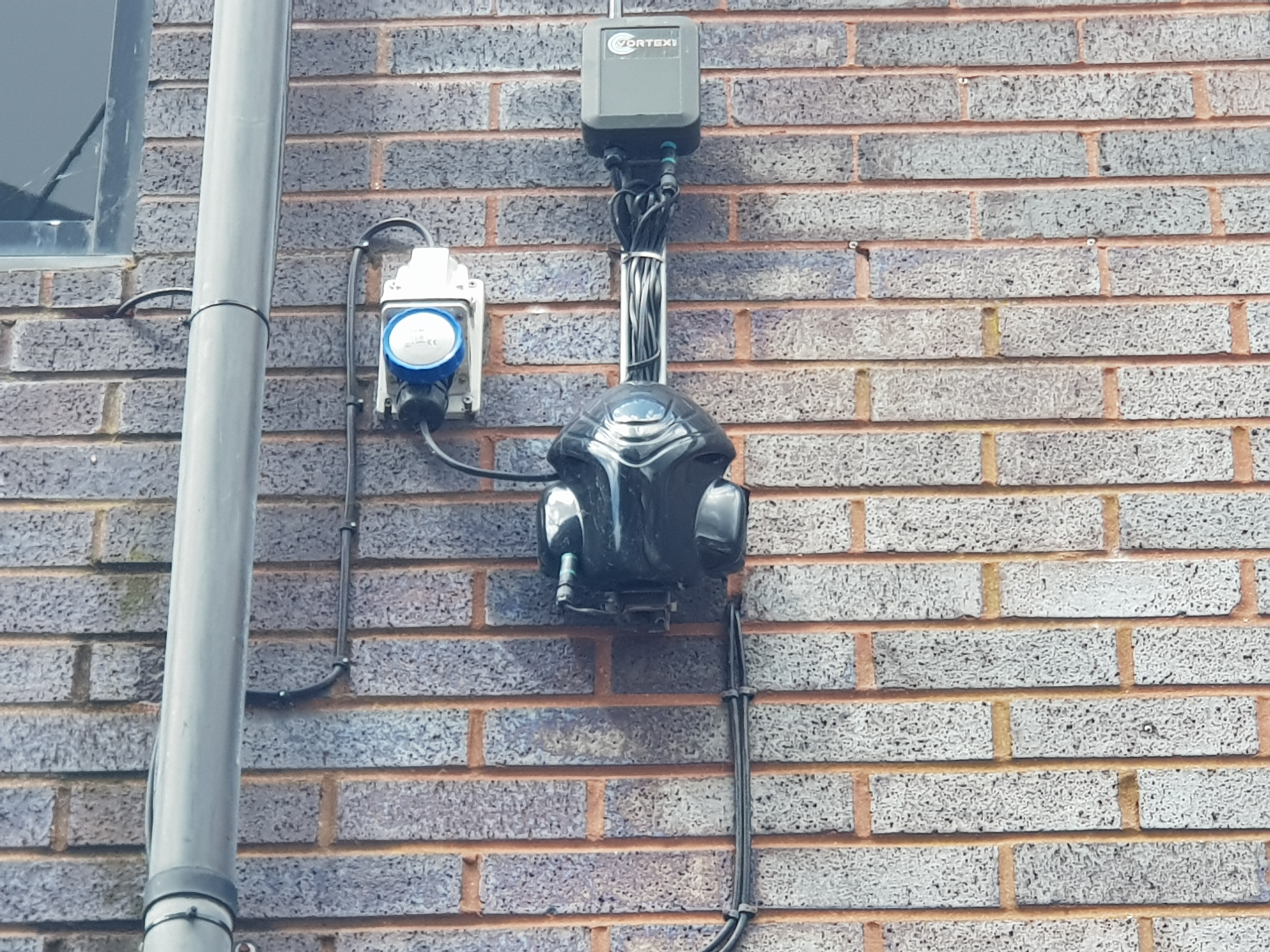
PM2.5 emissions in Wales remain twice that of the rest of the UK. The Welsh Government's new clean air bill is unlikely to bring a quick solution.
By Ahhyeon Cho, Jeffrey Halley and Vaishali PandiyenMay 2023
PM2.5 stands for “particulate matter” with a diameter of 2.5 micrometres or less. Its tiny size means it's very easy to inhale and that it can penetrate human lungs with ease and then enter the bloodstream.
Imagine a single hair from your head: the average human hair is about 70 micrometres in diameter. If you take this single hair and split it into 30 strands, you can estimate the width of one PM2.5 particle.
Now imagine a cube that is one metre across, one metre long and one metre high: a cubic metre (or m3): µg/m3 is a symbol used to measure the concentration of an air pollutant.
1 µg/m3 means that there is one particle of PM2.5 in a box of air that is 1 m long, 1 m wide, and 1 m high.
10 µg/m3 for PM2.5 means that 10 particles of PM2.5 size or smaller were measured inside an “air box” of the same size.
People in Swansea and Cardiff are still breathing air with high levels of tiny particle pollution, according to analysis of PM2.5 levels in 2022.
In south Wales PM2.5 levels are still more than twice as high as the World Health Organization's (WHO) guidelines, although they are within the limit allowed by the UK and Welsh governments.
PM2.5 is considered dangerous because it gets into the entire body through blood and affects circulatory and respiratory systems. The WHO considers it a carcinogen.
The worst PM2.5 average reading in south Wales last year was measured in Swansea where at one site the hourly average over the year was 11.27 micrograms per cubic metre (µg/m3). Another location in Swansea recorded an average of 10.37 micrograms.
In Cardiff, the PM2.5 average reading was 10.55 micrograms per cubic metre (µg/m3). Other areas that are monitored include Port Talbot and Newport and had less than 10 micrograms.
The WHO recommends keeping annual PM2.5 levels below 5 µg/m3 and it says this should be reflected in legislation and policy.
When analysed by month, south Wales has higher concentrations of PM2.5 pollution in the spring and winter months and lower concentrations in the summer and early autumn.
While this varies slightly across the region, broadly speaking PM2.5 levels are highest in March, December and January, and lowest in July and September.
Professor Frank Kelly, who leads an Environmental Research Group at Imperial College London, points to the spraying of pesticides and fertilisers as a reason for the increase in fine particulate matter in spring. He said, in an email, "At this time there is a lot of secondary PM2.5 being generated by action of our continental neighbours like France and the Netherlands as farmers are spraying their field with pesticides and fertilizers at this time".
He says that these particles "end up as precursors for secondary PM2.5 which is blown into the UK."
Wales has maintained an annual average target 20 µg/m3 in line with UK regulations. However, in March last year the UK government suggested a new limit for 2040, of below 10 µg/m3, a target that Wales does not yet meet.
In Cardiff, the annual PM2.5 hourly levels were as low as 8.52 units in 2021 during the Covid-19 lockdown. Prior to the coronavirus pandemic, Cardiff's PM2.5 levels were 10.09 units in 2018 and 11.24 units in 2019.
Although south Wales has cleaner air than the cities of India or China, the WHO warns of a clear link between air pollution and deaths caused by circulatory, respiratory and lung cancer. The figures for south Wales remain nearly twice as high as the WHO's safe levels.

Air quality monitor in central Cardiff recording Nitrogen Dioxide and particulate matter (PM2.5, PM10) every hour. (Credit: Ahhyeon Cho)

One of four air quality monitors in Cardiff Arms Park. Cardiff Council have installed 47 of these monitoring stations across the city this year. (Credit: Ahhyeon Cho)
Source: Air Quality Wales | Source for Annual Means: DEFRA and AQW
Air quality campaigners have said the Welsh government is missing a golden opportunity to clean up the country's air with a new law that will come into force in September. The Welsh government has just released its plans for the new law, but campaigners say targets are needed to lower the levels of Nitrogen Dioxide gas (NO2) and PM2.5 that people breathe in many of the country's built-up areas.
Despite the white paper stating, “The strongest body of evidence connecting an air pollutant with mortality and other morbidity effects involves fine particulate (PM2.5),” it allows for up to three years of consultation before setting a five-year target for PM2.5 pollution. It has raised the hackles of groups such as Healthy Air Cymru and the Chartered Institute of Environmental Health (CEIH), an accreditation organisation for environmental health professionals.
Ross Matthewman, Head of Policy and Campaigns for CEIH said in a press release, “The Welsh Government have missed a golden opportunity to introduce ambitious, robust environmental protection targets with this Bill. There was an opportunity to lay down a marker by introducing robust targets for both PM2.5 and NO2 in line with WHO guidelines.”
“Yet what has emerged has been rather underwhelming,” he says.
Those sentiments were echoed by Healthy Air Cymru (HAC), an umbrella group of organisations in Wales working to improve Welsh air quality. In a consultation reply to the proposed bill, Healthy Air Cymru also noted that it did not include any targets for either NO2 or PM2.5.
It wants the act to enshrine the WHO targets. The WHO has rapidly reduced its PM 2.5 guidelines in recent years, as more research highlights the particle's danger to public health in any concentrations. In 2021, the WHO reduced its recommendation to an annual daily mean of 5 µg/m3.
It says that fine particulate matter (PM2.5) can penetrate the lungs and further enter the body through the blood stream, affecting all major organs. Exposure to PM2.5 can cause diseases to cardiovascular and respiratory systems provoking, for example, stroke, lung cancer and chronic obstructive pulmonary disease.
Wales uses Westminster's PM2.5 annual mean hourly target of 20 µg/m3, but Asthma + Lung UK Cymru says that under current WHO guidance of 5 µg/m3, every care home, school, hospital, and GP in Wales would be in an area where PM2.5 is above the WHO guideline.
The government intends to use the local authority air quality measuring infrastructure to measure air quality, with no further financial resources to be committed. That monitoring infrastructure is fragmented with Swansea and Cardiff measuring a full spectrum of pollutants for example, while Merthyr Tydfil, which is home to Britain's only open-cast coal mine, measures only NO2. The mining company monitors PM2.5 and PM 10, but this data is not publicly available from the Department for Environment in London.
Ciaran Donaghy, a policy advisor at CEIH thinks there hasn't been enough money given to local authorities to monitor air quality. In an email he said that “Underpinning much of all of this, is the issue of local authority resource capacity and funding, which has faced considerable cuts over a sustained period”.
Unless local authorities have the money, he says, “any monitoring or enforcement will be hamstrung”.
Almost a third of Welsh PM2.5 pollution comes from people burning wood or coal at home and the new law will give councils greater ability to fine households in a smoke control area. At present, unauthorised smoke emissions from chimneys in a smoke control area is a criminal offence.
This requires physical entry to the offending homes which is problematic for local authorities. By making this a civil offence, council enforcement officers merely need to stand outside the offending house and witness smoke coming from the chimney to issue fines.
On paper this is welcome news for the councils, but once again, the Welsh government is delegating both the declaration of smoke control areas and enforcement actions to local councils. The white paper makes no provision for more funding to assist councils with air quality monitoring or enforcement.
A third of PM2.5 emissions in Wales comes from a category called “Residential, Commercial and Public” combustion, the vast majority from burning coal or wood at home. Wales already lags behind the rest of the UK in terms of limiting PM2.5. Emissions of PM2.5 in Wales for this category were estimated to be 6,000 tonnes in 2020, down 30% since 2005. But Wales still emits nearly twice as much PM2.5 per head of population as the rest of the United Kingdom. With less than 5% of the population, Wales emits 8% of the UK's PM2.5 particulate matter.
The map below highlights that PM2.5 emissions are concentrated in the urbanised south and north-eastern parts of Wales.
One solution that would avoid another three years of consultation, reduce PM2.5 emissions in Wales by almost a third, and lessen the burden on local authorities, could simply be an immediate ban on domestic wood and coal burners in urban areas of Wales. A recent University of Sheffield study showed that even very “efficient” modern wood burners had little impact on PM2.5 levels from houses. Donaghy said CEIH wants greater regulation of domestic wood burners in urban areas where there are alternative heat sources, such as gas and electricity.
When asked about the lengthy consultation period around the setting of air quality targets, the Welsh Government in an email response reiterated that they needed evidence, “We need to understand the limits of what's possible and the associated constraints based on robust science and socio-economic analysis.”
When asked about an immediate ban on domestic use of solid fuel they said that strategy could increase costs for households. “Costs may fall on homeowners and businesses to replace or upgrade their existing appliances to ensure compliance”.
“In the current cost of living crisis, we felt a mandate such as this would be inappropriate” they said.
The government may be right to be hesitant. The latest government data from late 2021 saw fuel poverty soaring to one in seven of Welsh households, with 3% at risk of extreme fuel poverty.